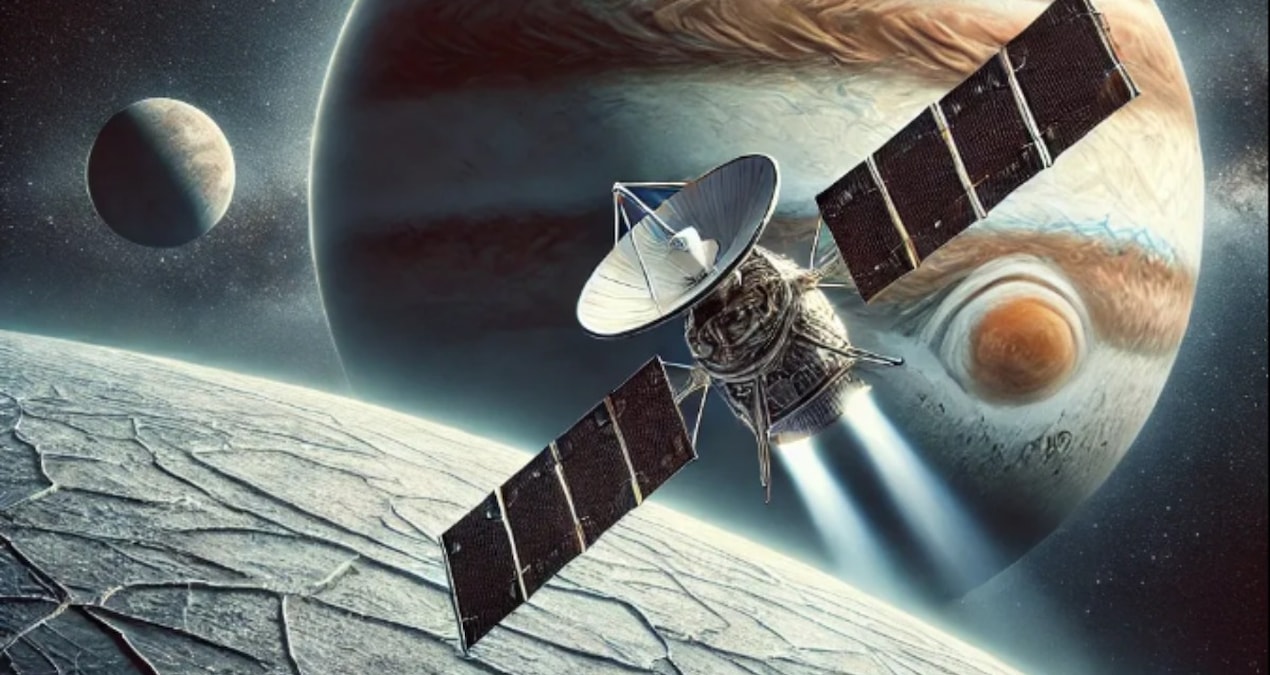Europa Clipper, which was launched on a Falcon Heavy rocket from the Kennedy Space Center in Florida, United States, began a five-and-a-half-year journey to study conditions suitable for life on Jupiter‘s moon Europa. This huge project, with a total cost of 5.2 billion dollars (about 178 billion TL), is considered one of NASA’s most advanced missions in the search for life in the solar system.
Scientists, who are almost certain that there is a large and deep ocean beneath the ice-covered surface of Europa, believe that there is a possibility of life where there is water. Europa Clipper’s mission is to search below the surface for organic compounds and components necessary to sustain life.
Europa Clipper will not look directly for signs of life on the surface. Instead, it will investigate whether the conditions necessary to sustain life exist in the ocean environment beneath the moon’s ice layers. “The ocean world stands out not only for how likely they are to live there, but for the fact that they could be habitable even today,” said Gina DiBraccio from NASA.
GOSPEL PRAYER
There were technical and natural problems during the pre-launch process. When it was discovered that the transistors used for the spacecraft were more sensitive to Jupiter’s intense radiation field than expected, NASA stopped the mission and conducted months of evaluations. In September, it was decided that everything was in order and the obstacles to the launch were removed.
However, Hurricane Milton, which hit the coast of Florida, delayed the launch by several days. Despite all these problems, the 5.7-ton spaceship finally started the journey of 3 billion kilometers.
It will arrive in 2030
Europa Clipper will gain speed throughout its journey by receiving gravitational support from Mars and Earth. The spacecraft, which will reach Jupiter in 2030, will fly close to Europa every 21 days after circling the giant planet. During one of these flights, the vehicle is expected to pass only 25 kilometers above the ice level.
The ocean is 120 kilometers deep
It is estimated that Europa’s ice sheet is between 15 and 24 kilometers thick, and below it is a deep ocean of more than 120 kilometers. Europa Clipper aims to test this theory by scanning under the ice with radar devices. The electronic equipment of the vehicle, which will continue its mission until 2034, is stored in a protective box covered with zinc and aluminum against intense radiation conditions.
If conditions suitable for life are found on Europa, this will bring not only Europa but also other ocean worlds in the solar system. Scientists in particular see Saturn’s moon Enceladus as one of the strongest candidates for the possibility of life. Europa Clipper’s findings could also open the door to a new era of finding other planets and moons.
2024-10-14 19:21:00
#NASA #launched #Europa #Clipper #reach #target #Sözcü #Newspaper

:strip_exif()/i/2007000366.jpeg?f=meta)
